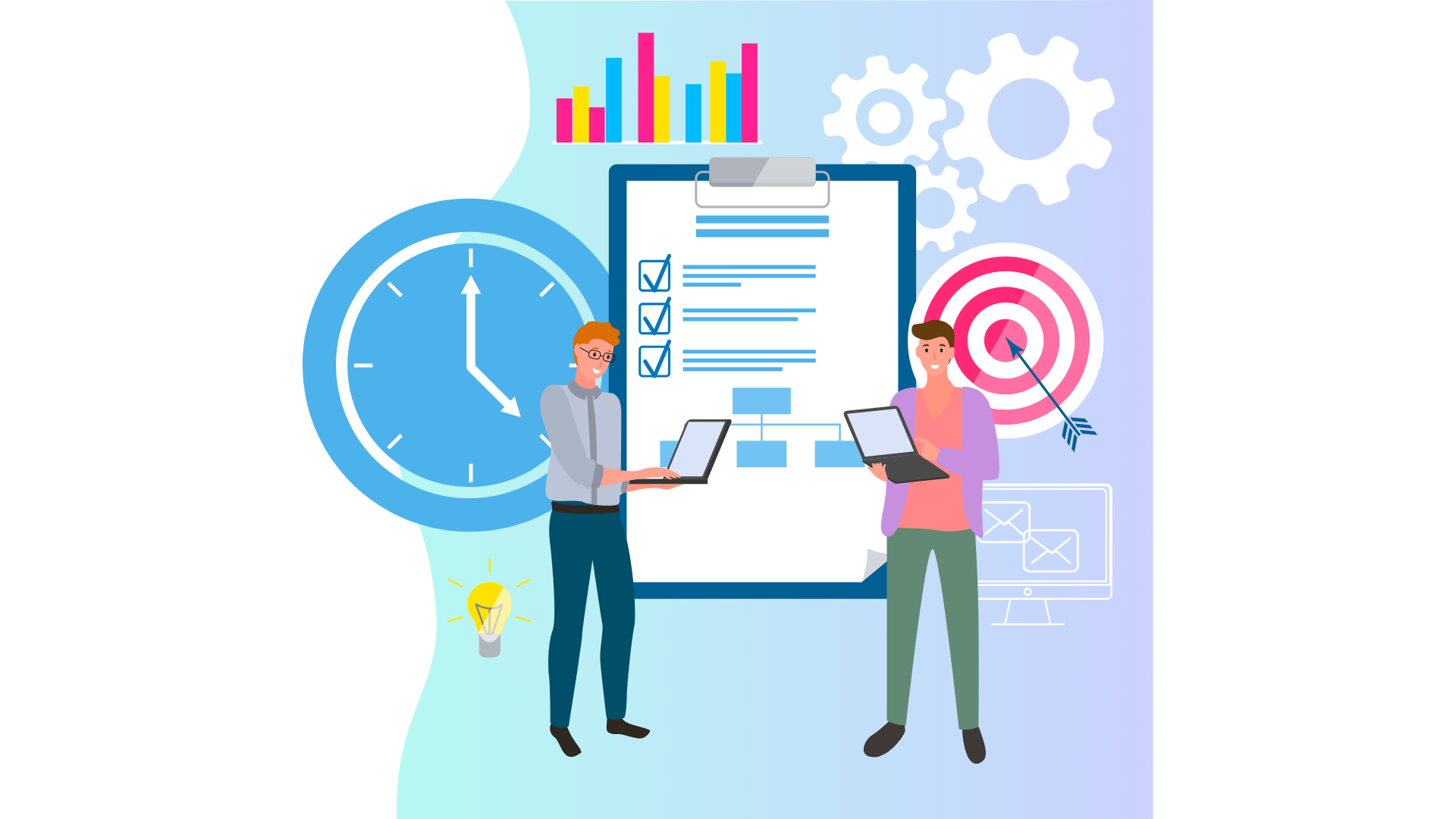In today’s fast-paced world, a personal development plan has become a key tool for achieving both growth and success. This plan acts as a detailed roadmap, guiding you through the process of reaching your personal and professional goals. However, it’s important to note that not all personal development plans are equally effective. To ensure you’re making the most of your efforts, you need a plan that is tailored to your specific needs and objectives. This blog post delves into the top 10 personal development plans that have been proven to yield positive results. By exploring these strategies, you’ll gain practical insights to enhance your growth and achieve your goals more effectively.
Table of Contents
Top 10 Personal Development Plans
1. Goal-Setting Framework for Personal Development Plans
When it comes to personal development, a structured goal-setting framework is one of the most powerful plans you can implement. This approach revolves around setting SMART goals—an acronym that stands for Specific, Measurable, Achievable, Relevant, and Time-bound.To start, goals need to be specific. A structured goal-setting framework emphasizes clarity and precision. Instead of setting a vague goal like “improve my skills,” aim to “complete a course on digital marketing by December.” This specificity ensures you know exactly what you are working towards.

Next, the measurability of your goals is crucial. The structured goal-setting framework helps you track progress by defining measurable milestones. For instance, if your goal is to “increase your savings,” a measurable goal might be “save $500 every month for the next six months.”
This allows you to monitor your progress and stay motivated. A structured goal-setting framework also focuses on setting achievable targets. It’s important to ensure that your goals are realistic given your resources and constraints. For example, setting a goal to “run a marathon in a month” might not be feasible if you’re just starting out. Instead, aim to “complete a 5K run within three months.”
The relevance of your goals is another critical aspect. A structured goal-setting framework ensures that your goals align with your long-term personal development objectives. Setting a goal to “improve communication skills” is relevant if you aim to enhance your career prospects or personal relationships.
A structured goal-setting framework requires that you set deadlines to create a sense of urgency and commitment. For instance, rather than aiming to “learn a new language,” set a time-bound goal such as “achieve conversational fluency in Spanish within six months.”
By incorporating the SMART criteria into your personal development plans, you ensure that your goals are clear, measurable, realistic, relevant, and timely. This structured approach significantly enhances the likelihood of achieving your personal growth objectives and making meaningful progress.
- SMART Goals:
- Specific: Clearly define what you want to achieve. Instead of a vague goal like “improve fitness,” specify “run 5 kilometers in 30 minutes.”
- Measurable: Quantify your goals so you can track your progress. For example, “increase sales by 20% within six months” provides a clear metric for success.
- Achievable: Set realistic goals that are within your reach given your current resources and constraints. Ensure that your objectives are challenging yet attainable.
- Relevant: Align your goals with your broader personal or professional aspirations. A relevant goal connects with your overall purpose, such as “earn a certification that will help in your current job role.”
- Time-bound: Establish a deadline for achieving your goals to create urgency and focus. For example, “complete the online course by the end of the quarter.”
- Clear Definition: When you outline your goals with precise details, it helps in crafting a clear plan of action. This means breaking down larger goals into smaller, manageable tasks with specific deadlines.
- Progress Tracking: Regularly monitor your progress to ensure you’re on track. Use tools like spreadsheets, apps, or journals to record milestones and assess how well you’re meeting your targets. This helps in maintaining motivation and making necessary adjustments.
- Regular Reviews: Incorporate scheduled reviews into your plan to evaluate your progress. Reflect on what’s working and what isn’t. This practice allows you to make adjustments to your strategies or goals based on real-time feedback.
- Adaptability: Ensure that your personal development plans remain flexible to accommodate changes in your goals and aspirations. As you grow and evolve, your objectives may shift, and your plan should adapt to these changes to stay relevant and effective.
By following this goal-setting framework, you create a structured, actionable plan that not only helps you set clear objectives but also guides you through the process of achieving them.
2. Daily Routine Optimization for Personal Development Plans
Optimizing your daily routine is a crucial aspect of successful personal development plans. By establishing productive habits and routines, you can greatly enhance both your efficiency and overall well-being. Here’s how to make this approach work for you:
- Identify Key Areas: Start by pinpointing areas where your current routine could be improved. This might include better time management, improved health practices, or reduced distractions. Recognizing these areas helps you focus your efforts where they will have the most impact.
- Set Specific Times: Structure your day by allocating specific times for different activities. For instance, designate certain hours for focused work, exercise, and relaxation. Creating a schedule ensures that you balance productivity with self-care, contributing to overall effectiveness.
- Boost Focus: Implement techniques to enhance your focus and minimize interruptions. This could involve using productivity tools, setting clear goals for each work session, or creating a distraction-free workspace. Effective focus techniques help you stay on task and make the most of your time.
- Reduce Distractions: Identify and address common distractions in your daily life. Whether it’s social media, email notifications, or noisy environments, finding ways to manage or eliminate these distractions can significantly improve your productivity and routine efficiency.
- Regular Reviews: Periodically review and adjust your daily routine to ensure it continues to meet your needs and goals. Regular check-ins allow you to refine your schedule, incorporate new habits, and adapt to any changes in your personal or professional life.
By optimizing your daily routine, you create a framework that supports your goals and enhances your overall effectiveness. This structured approach not only helps in managing your time better but also contributes to a healthier, more balanced lifestyle.
3. Skill Enhancement for Personal Development Plans
- Identify Relevant Skills: Begin by evaluating the skills that are critical for advancing in your career or personal interests. This might include technical skills, soft skills, or specific industry-related knowledge. For example, if you aim to advance in project management, skills such as strategic planning or risk management may be essential.
- Create a Plan: Develop a structured plan to acquire and master these skills. Outline the steps you need to take, such as enrolling in courses, obtaining certifications, or practicing specific techniques. Set clear, actionable steps to guide your learning process.
- Engage in Learning: Actively participate in educational opportunities such as online courses, workshops, or hands-on practice. Regular practice and exposure are crucial for mastering new skills. Utilize resources such as educational platforms, industry seminars, and professional development workshops.
- Set Milestones: Establish specific milestones and deadlines to track your progress. Break down your skill enhancement goals into smaller, manageable tasks with clear deadlines. For instance, if you’re learning a new software tool, set milestones for completing each module of the training.
- Continuous Improvement: Regularly review and refine your skill enhancement plan based on your progress and feedback. Stay updated with new developments in your field and adapt your learning strategies as needed. Continuous improvement ensures you stay relevant and competitive in your profession.
4. Networking and Relationships for Personal Development Plans
- Build Connections: Develop strategies for meeting new people and expanding your professional and personal network. Attend industry events, conferences, and seminars to connect with like-minded individuals. Join professional associations or clubs related to your interests.
- Maintain Contact: Keep in regular touch with your contacts through follow-up emails, social media interactions, or networking events. Consistent communication helps strengthen relationships and keeps you on their radar for future opportunities.
- Seek Mentorship: Identify potential mentors who can provide guidance, feedback, and support. Look for individuals with experience in your field who are willing to share their insights and offer career advice. A good mentor can help you navigate challenges and accelerate your personal development.
- Participate in Events: Actively engage in community activities, professional groups, and industry events. Participation in these events not only broadens your network but also increases your visibility and opens doors to new opportunities. Volunteering or speaking at events can further enhance your network.
- Foster Relationships: Cultivate meaningful relationships by offering support, sharing resources, and providing value to your network. Building genuine connections through mutual support and collaboration strengthens your professional and personal relationships.
5. Mindfulness and Well-Being for Personal Development Plans
- Practice Mindfulness: Incorporate mindfulness practices such as meditation, deep breathing, or yoga into your daily routine. These techniques help improve focus, reduce stress, and enhance emotional well-being. Schedule dedicated time for mindfulness exercises to make them a regular part of your life.
- Daily Routine: Integrate mindfulness practices into your daily schedule. Establish a routine that includes mindfulness exercises, reflection, and relaxation. Consistent practice helps build resilience and improves overall mental health.
- Reflection Exercises: Engage in regular self-reflection to assess your emotional and mental state. Use journaling or other reflection exercises to explore your thoughts and feelings. This practice provides insights into your well-being and helps you manage stress effectively.
- Self-Care: Prioritize activities that support your physical, emotional, and mental health. This may include healthy eating, regular exercise, and adequate sleep. A balanced self-care routine contributes to overall well-being and personal growth.
- Balance: Maintain a healthy balance between personal and professional responsibilities. Ensure that you allocate time for relaxation and leisure activities to prevent burnout and promote a fulfilling life.

6. Time Management Strategies for Personal Development Plans
- Prioritize Tasks: Learn to prioritize tasks based on their importance and urgency. Use tools like to-do lists or task management apps to organize and prioritize your daily activities. Focus on high-impact tasks that contribute significantly to your goals.
- Set Deadlines: Establish clear deadlines for completing tasks and projects. Deadlines create a sense of urgency and help you stay focused. Break larger projects into smaller tasks with individual deadlines to make them more manageable.
- Manage Distractions: Implement strategies to minimize distractions and interruptions. This might involve setting up a dedicated workspace, using productivity apps, or setting specific times for checking emails and social media. Effective management of distractions boosts productivity.
- Use Techniques: Apply time management techniques such as the Pomodoro Technique (working in focused intervals) or time blocking (allocating specific blocks of time for different tasks). Experiment with different methods to find what works best for you.
- Regular Assessments: Periodically review how you spend your time and assess the effectiveness of your time management strategies. Adjust your approach based on your findings to improve efficiency and productivity. Regular assessments help you stay on track and make necessary adjustments.
7. Financial Planning for Personal Development Plans
- Create a Budget: Develop a detailed budget to manage your income and expenses. Include categories for essential expenses, savings, and discretionary spending. A well-structured budget helps you maintain financial control and avoid overspending.
- Set Financial Goals: Define clear financial objectives, such as saving for a major purchase, paying off debt, or investing for retirement. Establish both short-term and long-term goals to guide your financial planning and decision-making.
- Plan for Savings: Create a savings plan that includes setting aside funds for emergencies, retirement, and other financial goals. Automate savings by setting up automatic transfers to savings accounts or investment plans.
- Review Regularly: Conduct regular reviews of your financial status to track your progress and make adjustments as needed. Assess your budget, spending habits, and savings to ensure you are on track to meet your financial goals.
- Adjust as Needed: Make adjustments to your financial plan based on changes in your income, expenses, or financial goals. Flexibility allows you to adapt to unexpected circumstances and maintain financial stability.
8. Continuous Learning for Personal Development Plans
- Commit to Learning: Embrace a mindset of lifelong learning by actively seeking opportunities to acquire new knowledge and skills. Stay curious and open to exploring new topics and areas of interest.
- Explore New Topics: Engage with various learning resources, such as books, articles, podcasts, or online courses. Diversify your learning experiences to gain a broader understanding of different subjects.
- Attend Courses: Enroll in online courses, workshops, or seminars to deepen your knowledge in specific areas. Look for courses that offer practical skills and up-to-date information relevant to your field.
- Track Progress: Allocate dedicated time for learning activities and monitor your progress. Set learning goals and track your achievements to stay motivated and ensure continued growth.
- Stay Updated: Keep abreast of industry trends, advancements, and new developments. Regularly review relevant publications, attend industry events, and participate in professional networks to stay informed.
9. Personal Reflection for Personal Development Plans
- Assess Achievements: Regularly evaluate your accomplishments and challenges to gain insights into your progress. Reflect on what you have achieved and identify areas for improvement.
- Journaling: Use journaling as a tool for self-reflection. Write about your experiences, thoughts, and feelings to gain clarity and understanding. Journaling helps you process your experiences and track your growth.
- Set Reflection Goals: Establish specific questions or prompts to guide your reflection. Consider questions like “What are my recent successes and setbacks?” or “How can I improve my approach to achieving my goals?”
- Adjust Plans: Use insights from personal reflection to make informed adjustments to your personal development plans. Modify your goals, strategies, or approaches based on what you learn about yourself and your progress.
- Enhance Understanding: Gain a deeper understanding of your strengths, weaknesses, and motivations. Regular reflection helps you align your actions with your goals and fosters personal growth.
10. Accountability and Support for Personal Development Plans
- Share Goals: Communicate your goals with trusted friends, family members, or mentors who can provide encouragement and hold you accountable. Sharing your objectives helps create a support network and increases motivation.
- Regular Check-ins: Schedule regular check-ins with your support network to update them on your progress. Discuss challenges and successes to receive feedback and guidance.
- Find a Partner: Join a group or partner with someone who has similar goals. Collaborating with others can enhance motivation, provide mutual support, and create a sense of accountability.
- Seek Encouragement: Utilize your support system to gain encouragement and constructive feedback. Positive reinforcement and advice from others can help you stay on track and overcome obstacles.
- Leverage Support: Make the most of external support by involving mentors, coaches, or accountability partners. Their guidance and encouragement can significantly boost your chances of achieving your personal development goals.
Conclusion
Creating and implementing a personal development plan is a powerful way to achieve your goals and enhance your growth. By adopting these top 10 personal development plans, you can ensure that your approach is effective and aligned with your aspirations. Whether it’s through structured goal-setting, optimizing your daily routine, or investing in continuous learning, each plan offers unique benefits that contribute to your overall development. Remember, effective personal development plans require regular review and adjustment to stay relevant and impactful. By consistently refining your strategies and incorporating new insights, you’ll find yourself making significant strides in both your personal and professional life. So, take the first step today and start implementing these personal development plans to unlock your full potential and achieve the success you envision.
Discover more from Positive Treasure
Subscribe to get the latest posts sent to your email.




